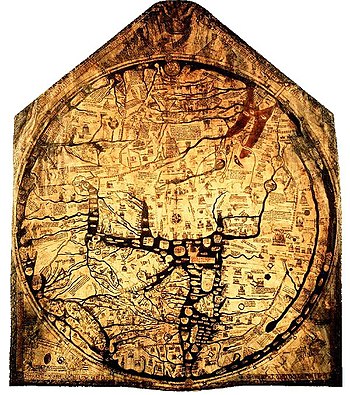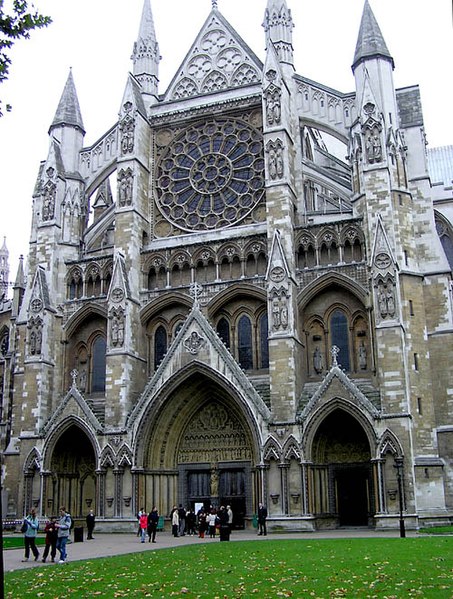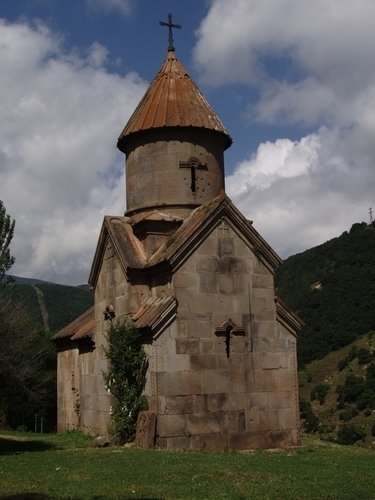One year closer to the end.
Monday, December 31, 2007
Today in the Midd... GLORIOUS ROMAN PAST
Word of the Week

"A decorative device (abstract, foliate, zoomorphic, or anthropomorphic) that fills the remainder of a line not fully occupied by script. Line fillers were initially popularized in Insular and Pre-Carolingian art."
From: Michellle Brown, Understanding Illuminated Manuscripts - a Guide to Technical Terms, (J. Paul Getty Museum: Los Angeles, 1994), 80.
Sunday, December 30, 2007
History buffs' treasure hunt

Archaeology-loving students are preparing for the next step on their quest to discover ancient secrets hidden in an East Yorkshire field.
And they are inviting you to play a part in uncovering the centuries-old treasures which may be waiting to be brought to the surface in a quiet village.
The group struck lucky earlier this year when one of their members, 24-year-old University of York archaeology undergraduate Chris Bevan started digging in the back garden of his new home in Holme-on-Spalding Moor and found Roman remains.
More pottery artefacts were also discovered in the garden and a nearby field, and Chris - along with fellow history-hunters Ellie Cox, Preston Boles, Mark Bell and Chris Brown - now plan to focus their efforts on a second field in the village where they believe more links to the area's past are hidden in the new year. They are looking for volunteers to help them in their search.
Chris said: "We've done a preliminary scan of this second field and we are pretty sure there's Roman and medieval pottery there, and possibly some prehistoric pottery as well.
"It's difficult to say how much might be there, but we had around 2,000 finds in the first field we studied, so once we search the second one we could be looking at 4,000 to 5,000 finds in total.
Saturday, December 29, 2007
Today in the Middle Ages
Friday, December 28, 2007
New homes plan will 'damage' St Andrews

Councillor Morrison said the ancient town, described by Historic Scotland as "the most important small historic burgh in Scotland and a medieval university town unique in Britain and rare in Europe," could not possibly retain its identity if it had to sustain 1000 new houses.
Her group on the council believe that 700 houses could be more easily absorbed.
Thursday, December 27, 2007
Word of the Week - Bizzaro Version

Nativity scene confirmed as medieval gem

For more than a century, scholars could not believe that the exquisite Nativity and Last Judgment diptych was genuine. They assumed it to have been carved in the 18th or 19th centuries, when Gothic-style ivories were made. Carbon14 dating tests done in Britain and France have now placed it firmly in the 12th or 13th century.
Throughout the 20th century it was in a private collection. Its previous provenance is unknown.
Today in the Middle Ages
Tuesday, December 25, 2007
A Partridge, a Pear Tree, a Price Tag That Grows

Today in the Middle Ages
Monday, December 24, 2007
On the twelfth day of Christmas the MSCU gave to me...


eleven philosophers searching,
ten commandments commanding,
nine churches standing,
eight men a-monking,
seven students MSCU-ing,
six movies a-playing,
five MAN-U-SCRIPTS,
four French kings,
three books of Dante,
two feuding popes,
and Dr Kwakkel in a library.

MSCU Recipe: Peach Tart
Today's Recipe: Peach Tart
5 peaches (4 cups)
1/4 cup red wine
3/4 cup sugar
1/2 tsp. cinnamon
1/2 tsp. ginger
1/4 tsp. salt
1.) Peel peaches, remove pits, and slice.
2.) Parboil in water until just tender.
3.) Drain peaches well and place in pie crust.
4.) Make syrup of sugar, spices, and wine.
5.)Pour over peaches and cover with top crust, making a few slits in the top.
6.) Bake at 425°F for 10 minutes, then reduce heat to 350°F and bake until done, about 30-40 minutes more.
Today in the Middle Ages
Sunday, December 23, 2007
MSCU Recipe: Strawberry

2 cups strawberries
1 cup red wine
1 cup almond milk
2 Tbsp. amidon
1/4 cup currants
pinch saffron
1/8 tsp. pepper
1/2 cup sugar
1/2 tsp. ginger
1/2 tsp. cinnamon
Saturday, December 22, 2007
MSCU Recipe: Spinach Tart

½ cup parsley
1 tsp. chervil
1 tsp. fennel
½ cup parmesan, grated
1 ½ cups mozzarella, grated
6 eggs
1 tsp. powder fine
Thieves Target Historic Church Roofs

Friday, December 21, 2007
It's Christmas in Heaven!
Wow, it's just like reading Dante.
Wishing everyone a safe and happy Christmas
- MSCU
MSCU Recipe: Apple Muse

Thursday, December 20, 2007
Medieval Mappa honoured by Unesco

It bears the name of its author Richard of Haldingham or Lafford, which historians have identified as modern Holdingham and Sleaford in Lincolnshire.
MSCU Recipe: Pynade

2 cups honey
1/4 tsp. ginger
1/2 tsp. galengale
1/4 tsp. cinnamon (canelle)
1/4 tsp. black pepper
1/4 tsp. grains of paradise
1 cup pine nuts











%203rd%20c%20AD.jpg)






















